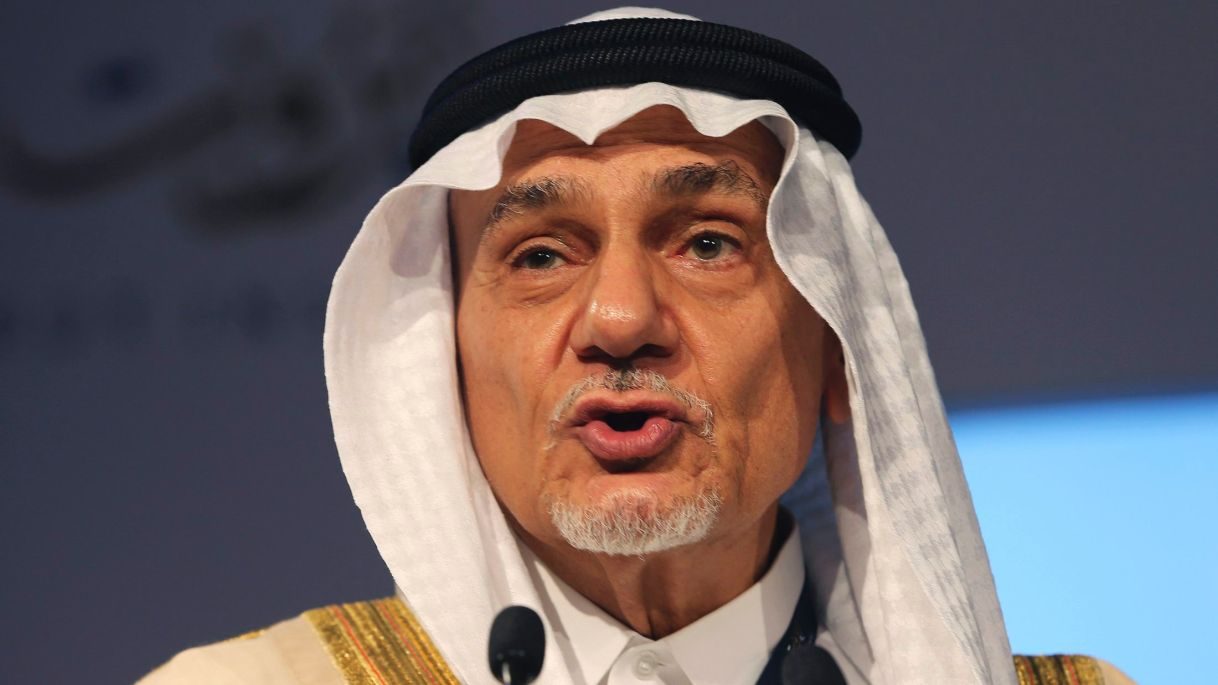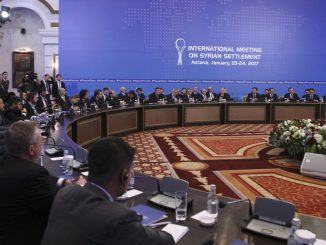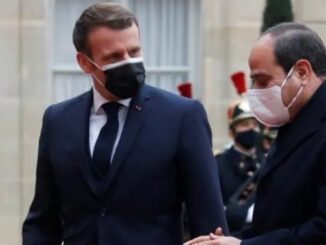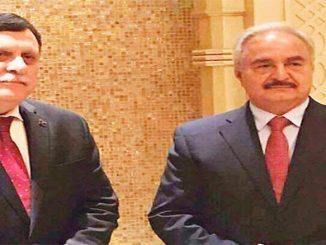
Speaking before the massive gathering of over 100,000 Iranian protesters who had rallied on Saturday in Paris, Saudi prince Turki Al-Faisal cited forgotten truths as to what Persian history of regimes truly looked like, and backed freedom movements in the area.
Prince Turki chronicled the history of friendship and cooperation between the Arab and Persian peoples, highlighting the cultural, religious and linguistic links they shared. He suggested that the current tensions between Iran and Arab countries were exceptional in a history of otherwise cordial relations, singling out the current regime as being responsible for the tensions due to its continued interference in Arab affairs.
Prince Turki received more than one standing ovation during his speech and, at one point, members of the audience interrupted his speech to Arabic chants of “the people want the downfall of the regime,” which had become the slogan of the Arab Spring revolutions of 2011. To that, Prince Turki responded: “I, too, want the downfall of the regime”.
A number of people in the audience carried Iraqi and Syrian opposition flags, while others flew pre-1979 Iranian flags featuring a lion and sun.
Concluding his speech, Prince Turki vowed to stand by the Iranian opposition in its efforts to remove what he called the “Khomeini cancer”, referring to the founder of the Islamic Republic, and said that the Iranian opposition’s struggle would go down in history as did the Shahnameh, the Book of Kings by renowned Persian poet Ferdowsi.
Speaking now: Prince Turki Al-Faisal #RajaviYes 4 #FreeIran pic.twitter.com/iFvOPNguEF
— Iran Arab Spring (@IranArabSpring) July 9, 2016
Read more: Iranian opposition conference: 100.000 protestors gather in Paris
Prince Turki full statement
“In the pre-Islamic world, the Persian Sassanian Empire extended from Turkey and Egypt in the west to the Indian subcontinent in the east; it was a cultural and political force rivaling that of ancient China, India, or Rome. The Sassanians were envied by the Romans for their advanced military technology, Sassanian artists and musicians were welcomed by the royal courts of ancient China, and the Sassanian government was widely praised for its humane and effective style of rule. The Persians of the ancient world could even lay claim to one of the world’s first monotheistic religions: Zoroastrianism, a faith based on the teachings of Zoroaster, who lived over 3,000 years ago,” Prince Al Faisal said.
Speaking of the heritage shared by Persians and the rest of the Muslim world, Prince Al-Faisal said that “Al-Ghazali, the theologian, scholar and mystic often referred to as one of the most important Muslims after the Prophet Muhammad’s (PBUH) companions, was from a city near Mashhad.”
Iran’s regime now chiefly is led by clerics, otherwise known by ‘mullahs,’ and has once too many proven that it stands far from a modern day democracy. However, mullahs had only risen to power after 1979 Revolution, which overthrew the U.S.-supported Mohammad Reza Shah Pahlavi.
Prince AlFaisal traced back further in time revealing that “Iran’s 1905 Constitutional Revolution laid bare the corruption of the crumbling Qajar dynasty: in the early 20th century,”
“Persia was vulnerable to Soviet expansion and colonial British influence, caught between larger powers. Reza Shah Pahlavi, who came to power in the aftermath of a 1921 coup, was able to rescue Iranian pride of place from a geopolitical morass. His modernization programs – Western-style university education, better health care, the development of railways and infrastructure – helped the nation to join the developed nations of its era as a peer.”
“The Shah’s regime represented a step forward for Iran in many ways, but at the same time, the Pahlavi’s secular and authoritarian rule was perceived as alienating by some in Iran’s more religious and secular,” he added.
Describing the toppling over of Pahlavi “The Iranian Revolution of 1979, which installed the powerful yet polarizing Khomeini as Supreme Leader, was a new and vastly different articulation of Iranian identity,” Prince Al Faisal said.
“In Saudi Arabia in particular, despite words of welcome of a constitutionally Islamic government in Iran by the Saudi leadership of 1979, Khomeini in his first year in power not only supported sectarian separatists in the Saudi Eastern Province but also denounced all Muslim monarchies as un-Islamic,” the Prince added.
“Khomeini combined the Persian imperial ambition of the Shah with the more recent Shi’ite authority of his intellectual ancestors in Qom. This was an Iranian empire like no one had ever seen: insular, combative, and eschewing cultural exchange in favor of a claim to so-called universal truth rooted in self-interest and maintenance of the new revolutionary elite.”
The new mullah regime had become to be known as a widely bigoted ruling entity, even against Iranians themselves, “despite this isolationist and interventionist foreign policy, the first and foremost victims of Khomeinism have been the Iranian people themselves – not only the political activists opposed to his all-encompassing, authoritarian and totalitarian ideology; but also to the ethnic and religious minorities of Kurds, Arabs, Azaris, Turkmen, Baloch, Sunnis, Ismailis, Bahais, Christians, and Jews of Iran against the clerical Twelver religiopolitical elite of the Revolution,” Prince Al Faisal said. Iran
Towards the end of his speech, Prince Al Faisal lauded the exertions spent by the 100,000 who had gathered in hopes of freeing their homeland from an oppressive regime. The Prince also asserted that the whole of the Muslim world stands to support their cause both in heart and soul. Iran
“And you, Maryam Rajavi, your endeavor to rid your people of the Khomeinist cancer is a historic epic that, like the Shanameh, will remain inscribed the annals of History,” the Prince addressed Rajavi, wife of the Iranian activist and MEK leader Massoud Rajavi.



